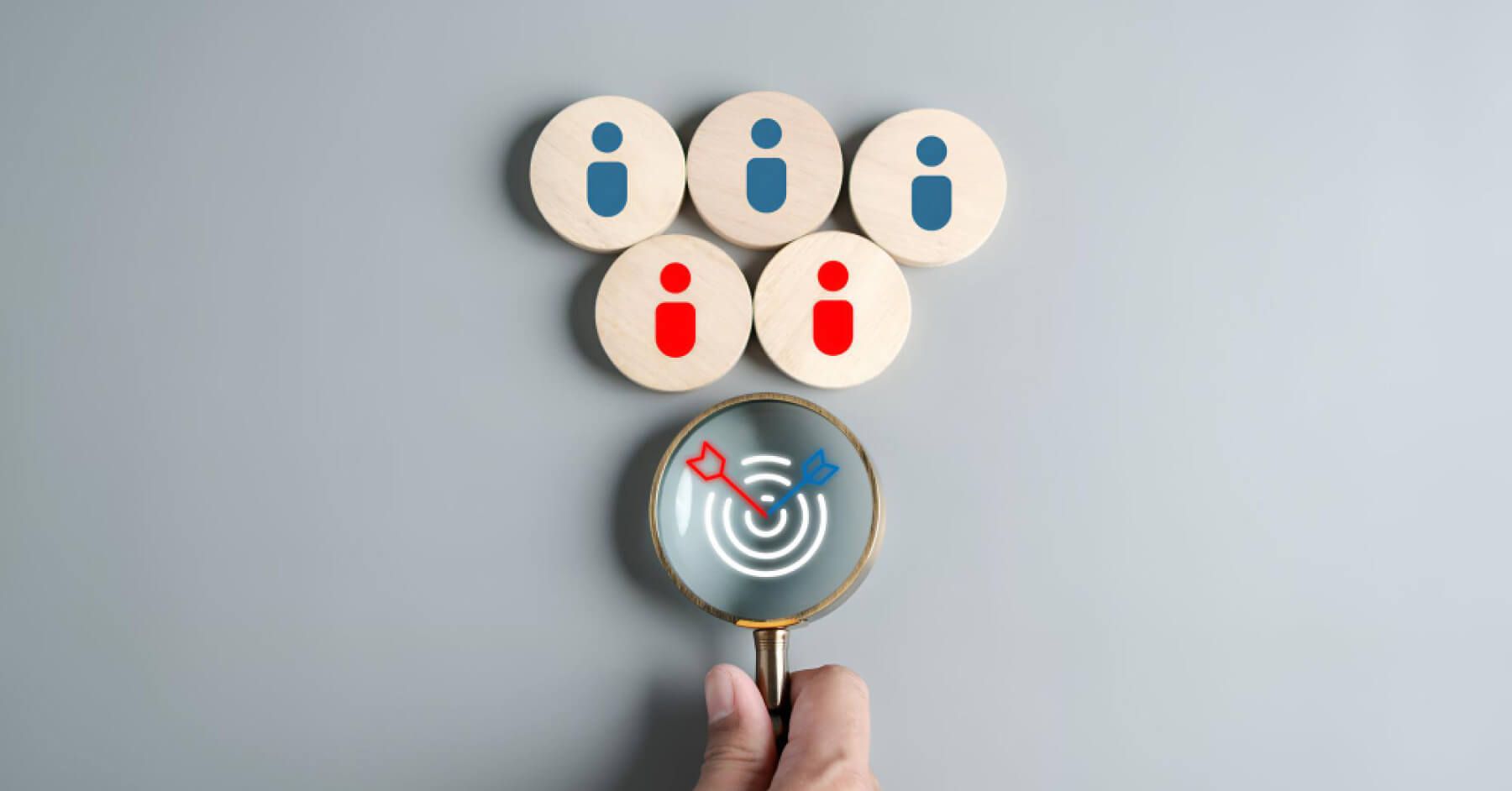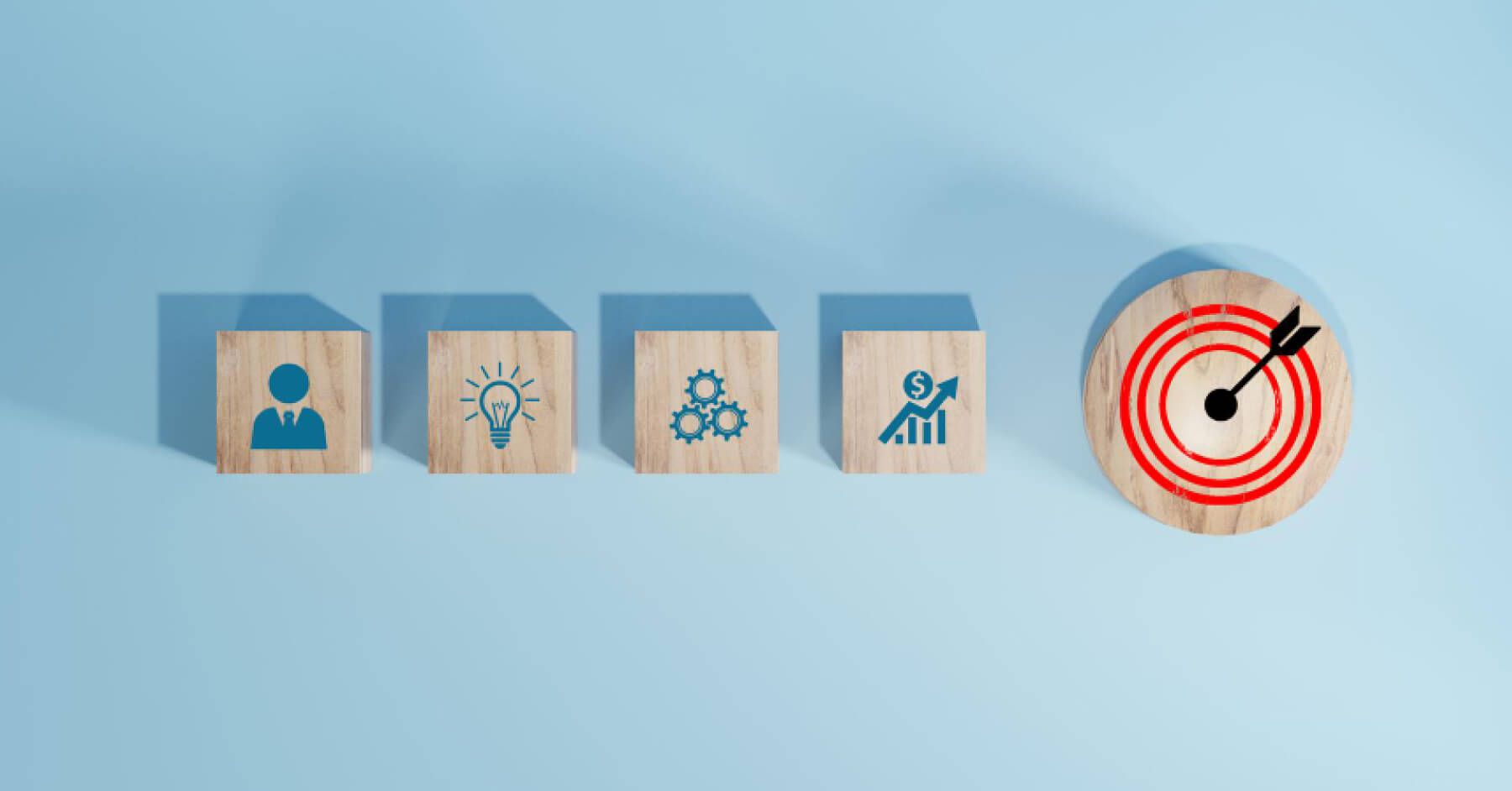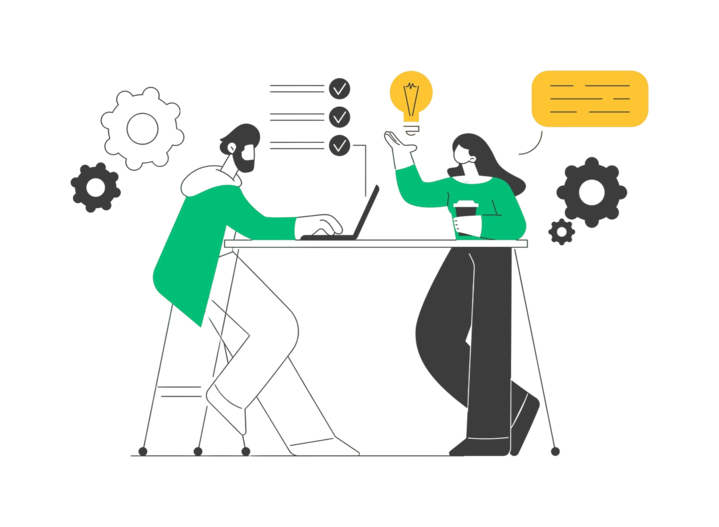Employee insights: How to unlock smarter decisions and drive engagement in 2026

Remember the days when you’d try to guess what your friend wanted for their birthday? You’d study every clue, a passing comment, a random “I love this,” or the way they’d pause in front of a store window. You weren’t just listening; you were decoding. And when you finally got it right, the look on their face said everything.
Employee insights work a lot like that. You stop guessing, start understanding, and make decisions that actually land. They turn scattered signals into clarity so you’re not operating on assumptions but on what truly matters to your people.
Dive in to see how these insights help you move from intuition to impact.
- Employee insights reveal real patterns behind how people feel, work, and engage every day.
- Multi-channel feedback and hybrid workforce surveys help collect accurate, continuous insights.
- These insights guide smarter decisions in culture, communication, DEI, and engagement.
- Real-time listening prevents issues early, while annual surveys show long-term trends.
- Platforms like CultureMonkey turn raw feedback into actionable steps that build trust and alignment.
What are employee insights?
Employee insights are the patterns, perceptions, and signals you gather from your workforce to understand how they think, feel, and behave at work. They go beyond surface-level feedback and help leaders interpret what employees actually experience day to day. Organizations use these insights to determine the key drivers of engagement and satisfaction within the workplace.
Today’s organizations collect employee insights through multiple touchpoints, including a multi-channel feedback system, hybrid workforce surveys, and short listening pulses.
The goal is to capture workplace insights from different angles so leaders can understand not just what employees say, but why they say it. This makes the data far more actionable and relevant across teams and situations.
Types of employee insights you should track regularly
Tracking the right employee insights helps leaders understand what’s working, what’s slipping, and where teams need support. A good mix of qualitative and quantitative signals keeps decisions grounded in reality. Conducting regular surveys is an effective way to gather ongoing insights into employee sentiment, engagement, and needs. Here are the types of insights worth monitoring consistently:
- Sentiment insights: These capture how employees feel about work, leadership, and their day-to-day environment. Monitoring areas like work-life balance and the overall work environment is essential, as these factors significantly influence employee motivation and well-being. Trends from hybrid workforce surveys or a multi-channel feedback system help you spot shifts in mood early. Leaders can act before issues grow into deeper engagement concerns.
- Engagement insights: These show how committed, motivated, and connected employees feel. When paired with employee engagement insights from your employee engagement app or platform, you see which teams feel energised and which need targeted support.
- Performance insights: These link employee perceptions to output, goal clarity, and workload balance. They help leaders understand whether expectations are realistic and where bottlenecks disrupt productivity. Performance trends also reveal how culture impacts results.
- Experience insights: Collected through an employee experience platform, these highlight how employees interact with processes, tools, and policies. They uncover friction points that frustrate teams and show where improvements can streamline daily work. Tracking work-life balance and work environment through experience insights helps organizations address key drivers of satisfaction and retention.
- Communication insights: These reveal whether messages are understood, timely, and trusted. With an omnichannel listening strategy, you can see which channels work best and where clarity breaks down, especially across distributed teams.
- Relationship insights: These explore dynamics between managers, peers, and cross-functional partners. Strong relationships drive collaboration, while strained ones slow progress. These insights help identify trust gaps and guide development for healthier team interactions.
When and why employee insights make a difference at work?

Employee insights matter most when organisations want to understand what’s happening beneath the surface. They reveal patterns leaders might otherwise miss and help teams stay aligned during change, growth, or uncertainty through effective data collection. When gathered consistently through workplace insights and people insights, they turn daily experiences into clarity-driven decisions.
Employee insights matter because they uncover what’s really happening beneath the surface—things leaders can’t see through intuition alone.
They also improve communication, trust, and relationships across teams by revealing how messages land and how people collaborate.
- During organisational change: When structures, tools, or policies shift, employee insights show how teams are coping. Signals from a multi-channel feedback system help leaders understand confusion, resistance, or unmet needs early. These critical insights prevent disruptions and keep transitions smooth.
- When engagement drops: Leaders often sense disengagement late. Employee engagement insights highlight early signs—low motivation, unclear goals, or workload strain. These critical insights help HR address issues with targeted actions instead of broad, ineffective fixes.
- When planning new initiatives: Before rolling out programmes, insights from hybrid workforce surveys reveal what employees actually want. These critical insights avoid misaligned initiatives and ensure decisions reflect the real employee experience, not assumptions.
- When improving communication: Miscommunication spreads quickly in growing or distributed teams. Insights gathered through an omnichannel listening strategy show whether messages land well and which channels need more attention. These insights are critical for effective communication.
- When shaping culture and relationships: People insights uncover how teams collaborate, how managers support employees, and where trust gaps exist. These critical insights guide leaders in building stronger connections and healthier work environments that feel genuinely supportive.
The role of surveys in collecting meaningful employee insights

Surveys remain one of the most reliable ways to capture meaningful employee insights because they give every individual a structured space to share their experiences. Regular surveys, including the employee engagement survey, are essential for ongoing research into employee sentiment and engagement.
Instead of relying on assumptions or one-off conversations, engagement surveys convert day-to-day feelings into clear patterns that leaders can interpret. Whether it’s sentiment, engagement, or culture-related feedback, surveys offer a consistent method to measure what employees think and need.
A multi-channel feedback system allows surveys to reach employees wherever they work, on mobile, email, or integrated tools, ensuring no voice gets lost. Hybrid workforce surveys play a major role here, helping organisations understand the needs of in-office, remote, and on-the-go employees. With the support of omni-channel HR tools, HR teams can collect workplace insights from various touchpoints, giving a fuller picture of how people experience work across roles and locations.
Surveys also make it easier to gather employee engagement insights and people insights that guide strategic decisions. Regular pulses, long-form assessments, or experience-focused surveys from an employee engagement app or employee experience platform help leaders track shifts over time.
When surveys are well-designed, timely, and supported with the right listening strategy, they don’t just capture feedback—they reveal the story behind employee behaviour and help leaders act with confidence.
Real-time vs. annual feedback: What gives better insights?
Real-time and annual feedback both offer value, but they serve very different purposes. Real-time input captures what employees are experiencing right now, while annual reviews give a wider view of long-term trends.
Understanding when each works best helps leaders design a smarter listening rhythm built on consistent employee insights.
Common mistakes to avoid when interpreting employee insights

Interpreting employee insights isn’t just about reading data but it’s about understanding the story behind it. When leaders misread or oversimplify feedback, they risk making decisions that don’t solve the real problems. Avoiding these common mistakes helps teams use workplace insights and people insights more effectively:
Leaders often misinterpret employee insights when they focus only on numbers, overlook small yet consistent patterns, or treat all teams the same.
Another common mistake is acting on assumptions without cross-checking feedback across multiple channels or having follow-up conversations.
- Focusing only on scores: Numbers matter, but context matters more. Focusing on meaningful feedback and key questions, rather than just scores, is crucial. Looking only at ratings without reading comments or signals from a multi-channel feedback system leads to shallow conclusions. The meaning behind the score is what drives real improvement.
- Ignoring small but consistent patterns: Minor trends in hybrid workforce surveys often reveal early warning signs. When leaders dismiss them as “too small to matter,” they miss opportunities to prevent larger issues from forming.
- Treating all teams the same: Different groups experience work differently. Interpreting employee engagement insights without considering role, location, or workload creates one-size-fits-all actions that fall flat.
- Making assumptions without cross-checking: Insights should be verified through an omnichannel listening strategy. When leaders jump to conclusions based on a single data point, decisions become reactive instead of informed.
- Acting without follow-up conversations: Data is only half the story. Without clarification conversations or input through an employee engagement app, leaders risk misinterpreting intent and applying solutions that don’t match what employees actually need. It’s important to use follow-up conversations to understand what employees are concerned about and address their specific worries.
How to collect employee insights without survey fatigue?

Collecting employee insights shouldn’t feel like a chore for your workforce. When surveys become too frequent, long, or repetitive, employees tune out, and the quality of feedback drops. The goal is to build a rhythm that keeps insights flowing through a multi-channel feedback system without overwhelming people, ultimately enhancing operational efficiency.
- Use shorter, focused pulses: Instead of long forms, send quick surveys with 3–5 questions. These work well across hybrid workforce surveys because they respect employees’ time and still deliver meaningful workplace insights leaders can act on quickly.
- Rotate topics strategically: Every survey doesn’t need to cover everything. Alternate between engagement, experience, communication, and culture. This keeps people's insights fresh while avoiding repetitive questions that cause fatigue.
- Leverage an omnichannel listening strategy: Combine surveys with passive signals from chat tools, town halls, and your employee engagement app. When not every insight relies on a questionnaire, employees feel less pressured to respond constantly.
- Personalise survey timing: Send surveys when teams are less stressed, not during peak deadlines. Omni-channel HR tools make it easier to segment groups and find the right timing for each department.
- Share results quickly: Employees engage more when they see their input leads to change. Use your employee experience platform to share quick summaries and next steps so they feel heard.
- Mix surveys with conversations: Not all insights need digital forms. Encourage managers to gather people insights through one-on-one check-ins or team discussions. This reduces survey load while strengthening trust and clarity.
How employee insights improve DEI and inclusion strategies?

The importance of effective DEI strategies is essential for building a strong employer brand and positioning your organization as an employer of choice. This is where employee insights step in.
When organisations collect signals through a multi-channel feedback system or hybrid workforce surveys, they uncover patterns that reveal who feels included, who feels unheard, and what needs to change.
1. Spotting inequities early through consistent listening
Employee insights help uncover subtle gaps in access, growth opportunities, or treatment. When signals come through an omnichannel listening strategy, leaders can see patterns across locations, roles, or identity groups. This leads to more accurate DEI decisions instead of guesswork.
Workplace insights also highlight systemic issues that traditional audits might miss, ensuring more responsive inclusion plans.
2. Understanding how different groups experience policies
A policy may look fair on paper but feel different in practice. Compensation policies, for example, are areas where fairness and equity are especially important. People insights help HR teams see how various demographic groups actually experience HR processes, benefits, and communication.
With support from omni-channel HR tools, leaders can compare groups’ experiences and address unintended bias. These insights guide adjustments that improve equity across the entire organisation.
3. Improving representation and belonging through real feedback
Employee engagement insights show the overall sense of belonging within an organization and whether individuals feel comfortable sharing their perspectives, feel valued, respected, and included in decision-making.
When data from an employee engagement app reveals lower belonging scores in certain groups, leaders can take targeted action. These insights help shape conversations, mentorship programmes, and leadership changes that uplift underrepresented employees.
4. Creating DEI initiatives based on real needs, not assumptions
DEI initiatives work best when they reflect what employees actually need. Insights gathered through a multi-channel feedback system or employee experience platform point out which initiatives resonate and which fall flat.
This ensures DEI plans aren’t symbolic—they are grounded in employee reality and designed for meaningful impact.
5. Tracking progress and accountability over time
DEI is not a one-time effort. Employee insights help leaders measure the long-term impact of inclusion strategies by tracking sentiment, participation, and behaviour shifts. Hybrid workforce surveys, ongoing pulses, and conversational feedback from multiple channels help organisations monitor whether changes are working.
This keeps DEI efforts measurable, transparent, and genuinely aligned with employee expectations, contributing to a better employee experience and measurable outcomes such as improved retention.
How do HR leaders use employee insights to improve culture?

HR leaders rely on employee insights to understand what truly shapes the day-to-day experience of their teams. With workplace insights and people insights coming from multiple channels, they can strengthen workplace culture with intention and clarity.
- Spotting what lifts or drains morale: Employee insights highlight patterns around motivation, stress, and team energy. A multi-channel feedback system helps HR track early dips and respond before they spread. This keeps morale steady and employees feeling supported.
- Improving manager communication and support: Hybrid workforce surveys reveal whether managers are setting clear expectations and supporting employees well. When issues emerge, HR can guide managers with coaching or targeted training. These changes strengthen trust across teams.
- Refining communication norms across the company: An omni-channel listening strategy shows how employees interpret organisation-wide messages. HR uses these insights to refine tone, clarity, and timing, helping build a culture where communication feels transparent and consistent.
- Shaping growth and recognition programs: People insights reveal what employees value most—career opportunities, feedback, or recognition styles. With data from an employee engagement app or employee experience platform, HR can design programs that feel fair and personalised, while also supporting new employees as they integrate into the workplace culture.
- Addressing hidden cultural blockers: Workplace insights often expose issues employees hesitate to share openly, such as confusing processes or unclear priorities. HR can quietly solve these problems, improving the culture without creating friction.
- Creating consistency across different work settings: With omni-channel HR tools, HR leaders can compare experiences of remote, hybrid, and office teams. This helps them close gaps and build a more unified culture where values translate evenly across locations.
How companies in 2026 are transforming workplaces with insights?

Companies in 2026 are moving away from instinct-driven decisions and leaning heavily on employee insights to shape smarter, more responsive workplaces.
With hybrid teams, shifting expectations, and rapid digital adoption, leaders need clarity on what employees experience now and in the future. Insights gathered through multiple channels help organisations stay aligned, agile, and truly people-first.
- Designing employee journeys with real experience data: Organisations now use workplace insights from an employee experience platform to map out the full employee journey, tailoring their strategies to the specific industry. This helps them understand friction points in onboarding, daily workflows, and career progression. With this clarity, companies redesign processes to feel smoother and more supportive.
- Strengthening hybrid collaboration and connection: Hybrid workforce surveys help leaders see how remote and on-site employees experience teamwork differently. Companies adjust meeting norms, communication rhythms, and tool usage based on people insights, supporting new hires and hires during onboarding. This creates collaboration patterns that feel natural instead of forced.
- Building responsive wellbeing and engagement programs: Employee engagement insights reveal changing stress levels, workloads, and motivation trends. Using data from a multi-channel feedback system, employers create timely wellbeing initiatives instead of generic year-long plans. This makes employees feel seen and cared for.
- Boosting inclusion with continuous listening: Through an omnichannel listening strategy, companies track belonging, fairness, and representation across groups. They use these insights to refine policies, remove biases, and create environments where all employees feel included. Small adjustments lead to meaningful cultural shifts.
- Making everyday decisions smarter and faster: Leaders no longer wait for quarterly or annual updates. Omni-channel HR tools bring in real-time people insights that guide daily decisions—from workload balancing to communication tweaks—while aligning these decisions with company goals and reducing cost through better retention of employees and new hires.
“Employee insights don’t shift that often, so why keep tracking them?”
It’s a common pushback, and on the surface, it feels reasonable. If your workforce seems stable and nothing appears “wrong,” it’s easy to assume employees’ motivations stay the same.
But that assumption is exactly where organizations get blindsided. People’s expectations evolve quietly, shaped by life changes, market shifts, industry uncertainty, and new definitions of what “good work” looks like.
Recent Deloitte research shows 38% of workers say the main factor driving their work has changed in just three years. And that’s not a small swing, it’s nearly 4 in 10 employees changing what matters most to them.
When motivations shift this quickly, insights don't just “expire”; they become strategically urgent. Fresh employee insights ensure decisions stay relevant, expectations stay aligned, and engagement doesn’t erode quietly in the background.
How does CultureMonkey help you collect and act on employee insights?

CultureMonkey helps organisations turn employee insights into meaningful action by simplifying how feedback is collected, analysed, and implemented.
Instead of juggling scattered tools or inconsistent listening methods, HR teams get one place to run surveys, track trends, and close the loop with employees. It blends workplace insights, people insights, and engagement signals into a system leaders can actually use.
CultureMonkey helps organisations collect and act on employee insights by centralising surveys, feedback, and analytics into one unified platform.
It also turns raw feedback into clear, actionable steps through dashboards, nudges, and tailored recommendations.
1. Runs multi-channel feedback effortlessly
CultureMonkey enables you to gather insights through email, text messages, Slack, MS Teams, and more—creating a seamless multi-channel feedback system. This ensures every employee, including hybrid and frontline teams, has a way to share their voice. The platform makes feedback accessible, consistent, and easy to respond to.
2. Supports hybrid workforce surveys for every need
Whether it's engagement, onboarding, DEI, or pulse surveys, CultureMonkey helps HR leaders customise formats for hybrid teams. This ensures you receive insights that reflect diverse work environments. The results deliver a grounded, real-world view of employee experiences.
3. Backs an omnichannel listening strategy
CultureMonkey captures feedback beyond surveys, helping HR leaders listen across conversations, anonymous inputs, and manager check-ins. This omni-channel listening strategy creates a richer dataset that reveals patterns you might miss through surveys alone.

Turn employee insights into action
Launch workplace surveys with CultureMonkey and get real clarity on what drives your workforce.
Book a demo4. Converts data into clear workplace insights
The platform’s dashboards and analytics break down trends, sentiment, and behaviour signals into actionable insights. Leaders can spot morale dips, communication gaps, or culture issues quickly. These workplace insights guide more confident and timely decisions, ultimately reducing costs.
5. Enhances engagement through actionable nudges
CultureMonkey integrates with your employee engagement app to send reminders, gather micro-feedback, and keep employees involved. This creates a continuous flow of employee engagement insights without fatigue. The experience feels intuitive rather than overwhelming.
6. Drives meaningful action with tailored recommendations
Once insights are collected, CultureMonkey doesn’t leave leaders guessing. It provides targeted action suggestions, benchmarks, and follow-up tools through the employee experience platform. This helps HR teams close the feedback loop effectively and build trust through visible, thoughtful improvements.
Conclusion
Employee insights are transforming how organisations make decisions, strengthen engagement, and understand the everyday experiences of their workforce. When businesses and leaders listen consistently by using hybrid workforce surveys, multi-channel feedback, and people insights—they gain clarity that helps them address issues early and support teams more effectively. This approach makes cultural improvements more intentional and ensures employees feel genuinely heard.
As workplaces evolve, insights-driven decisions will set apart organisations that adapt quickly and create environments where people feel motivated and valued. When insights guide actions, teams experience smoother communication, better alignment, and stronger trust. If you’re ready to turn feedback into meaningful improvement, CultureMonkey can help you collect, understand, and act on employee insights with confidence.
Book a demo with CultureMonkey.
FAQS
1. What’s the difference between employee insights and employee feedback?
Employee feedback is the raw input employees share through comments, ratings, or suggestions. Employee insights are the deeper patterns drawn from that feedback, combined with workplace insights, people insights, and engagement trends. Insights explain the “why” behind employee experiences, helping leaders make stronger decisions instead of reacting to isolated comments.
2. How often should HR teams gather employee insights?
HR teams should gather employee insights continuously using pulses, hybrid workforce surveys, and a multi-channel feedback system. Short, frequent listening moments help spot early shifts, while quarterly or annual surveys capture long-term trends. A balanced rhythm ensures insights stay fresh without causing fatigue, supporting a more accurate view of employee needs.
3. What tools help HR leaders generate employee insights effectively?
Tools like omni-channel HR tools, an employee experience platform, and an employee engagement app help gather insights from multiple touchpoints. These systems combine survey data, sentiment signals, and real-time feedback to create a holistic understanding of employee experiences. They simplify analysis and bring together detailed workplace insights that leaders can use.
4. How do employee insights support leadership decisions?
Employee insights reveal how people feel about workloads, communication, and culture, helping leaders avoid guesswork. With people insights from hybrid workforce surveys and omnichannel listening, decisions become grounded in employee reality. Leaders can prioritise actions, solve issues early, and create strategies that align with team expectations.
5. How do you measure the ROI of employee insights programs?
ROI is measured by tracking improvements in engagement, retention, productivity, and cultural alignment after implementing insights-driven actions. Leaders compare data from a multi-channel feedback system and workplace insights before and after interventions. Reduced attrition, stronger morale, and better performance trends confirm whether the program delivers value.







